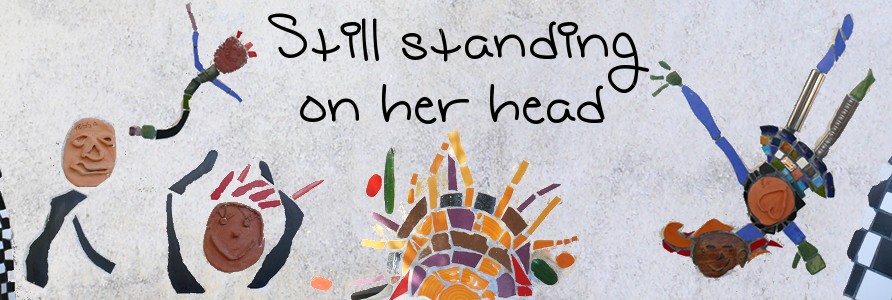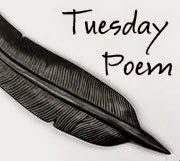This is the first novel from Mauritania to be translated into English. The protagonist Rayhana is a young Bedouin girl whose life changes when foreigners arrive to mine for metal near her Bedouin camp. Rayhana is attracted to one of them, a young man Yahya, and her life changes dramatically.
I found considerable resonances in this story with the book I read for the Comoros - "A Girl Called Eel". In both stories, a young girl rejects tradition and expectation to forge her own path in life. But this story is much less hopeful than the Comoros story. Rayhana steals her tribe's sacred drum and flees to the city in search of what has been stolen from her (what this is becomes clear as the story proceeds). And yet, while rejecting her tribe's way of life, she does not accept the city way of life either, being critical of the values of both.
I found the story gripping and was hoping for a happy ending almost to the last, but it was not to be. Perhaps in future young Bedouins will make the transition to city life more easily, and indeed, there are hints that it is a good deal more easy for men than for women. This book gives a valuable insight into the lives of the people of a little-known African country.
Mbarek Ould Beyrouk was born in Atar, Mauritania in 1957. He has written three novels. Le tambour des larmes was published in 2015 and won the Amadou-Kourouma Prize in 2016. It was translated as The Desert and the Drum by Rachael McGill and published by Dedalus in 2018.
Thursday, January 09, 2020
Tuesday, January 07, 2020
Comoros: A Girl Called Eel, by Ali Zamir
This is another of the books that I read in 2019 and was slow to get around in reviewing. Of course, this makes it a bit harder as my memory of the story is not fresh. However, it was very vividly written and has stuck with me quite a bit.
The outcome of the book is not really in doubt from the start, as we are introduced to the protagonist, Eel, in the middle of a desperate plight - she is adrift at see and drowning. The rest of the book sets about demonstrating how she got there as she tells her story. Supposedly it unravels in one long breathless sentence. This doesn't make the book as difficult to read as one might think, because in fact there are breaks - paragraph breaks and even chapter breaks, they are just not signalled by full stops.
Eel is an engaging character. She and her sister Rattler are daughters of a fisherman, All-Knowing. They attend high school, but Eel falls for another fisherman, Voracious, and her affair with him sets off the disastrous train of events recounted in the story. It could be a depressing book but in some ways it is strangely uplifting as Eel has a good degree of self-knowledge and self-possession. She lives fully, without regrets and is accepting of her fate without the ending feeling fatalistic.
The Comoros are a small island group about which I knew little, the book suggests that they were formerly a French colony, now independent, although the nearby island of Mayotte (which figures in the story) chose to remain as a territory of France.
Ali Zamir was born in Anjouan in the Comoros in 1987 and now lives in France. A Girl Called Eel (Anguille sous Roche) is the first of his three (so far) novels, was published by Le Tripode in 2016 and won the Prix Senghor. It was translated into English by Aneesa Abbas Higgins and published in Britain by Jacaranda Books in 2019, supported by an English PEN award.
The outcome of the book is not really in doubt from the start, as we are introduced to the protagonist, Eel, in the middle of a desperate plight - she is adrift at see and drowning. The rest of the book sets about demonstrating how she got there as she tells her story. Supposedly it unravels in one long breathless sentence. This doesn't make the book as difficult to read as one might think, because in fact there are breaks - paragraph breaks and even chapter breaks, they are just not signalled by full stops.
Eel is an engaging character. She and her sister Rattler are daughters of a fisherman, All-Knowing. They attend high school, but Eel falls for another fisherman, Voracious, and her affair with him sets off the disastrous train of events recounted in the story. It could be a depressing book but in some ways it is strangely uplifting as Eel has a good degree of self-knowledge and self-possession. She lives fully, without regrets and is accepting of her fate without the ending feeling fatalistic.
The Comoros are a small island group about which I knew little, the book suggests that they were formerly a French colony, now independent, although the nearby island of Mayotte (which figures in the story) chose to remain as a territory of France.
Ali Zamir was born in Anjouan in the Comoros in 1987 and now lives in France. A Girl Called Eel (Anguille sous Roche) is the first of his three (so far) novels, was published by Le Tripode in 2016 and won the Prix Senghor. It was translated into English by Aneesa Abbas Higgins and published in Britain by Jacaranda Books in 2019, supported by an English PEN award.
Labels:
Ali Zamir,
Comoros,
world reading
Wednesday, January 01, 2020
Marshall Islands: Marshall Islands Legends and Stories, ed Daniel A Kelin
I'm catching up - I have been reading but not posting, so this and the following two reviews are for books I read in 2019 but didn't post until 2020.
Daniel A Kelin lives in Hawaii (the United States) but travelled around the Marshall Islands, a scattered collection of tiny islands and archipelagos, collecting these stories. Unlike the traditional tales I've read from other Pacific nations, gods do not seem to feature in these stories, but there are plenty of supernatural beings , especially demons, and the trickster figure Letao. The sense of humour of the native story tellers is reflected in the frequent ending of the Letao stories - "he went to America, that's why the people there are so smart."
I did wonder whether there exist tales of gods which were not revealed to the editor, as it appears there may have been some cultural restrictions on telling the traditional stories to an outsider. However, most of the story tellers appeared to appreciate the necessity to have the stories recorded in order to preserve them, as the young people of the islands adopt a more Western way of life, and the old oral culture passes away.
I enjoyed these stories, more so than the ones I read from Nauru, as there appeared to be a greater variety. Since they were collected more recently, there are more reflections of modern culture in the stories, although they appear to be still largely traditional.
It seems timely that I came across a news story about the islands just a few days ago. They have been passed around various western nations before gaining their sovereignty - in World War 1 they were a Japanese territory and in 1944 they were taken over by the United States, which used them as a site for testing nuclear weapons.(Most notably, on Bikini Atoll.) It seems that the giant dome built to contain radioactive waste is leaking, contaminating the Enewetak lagoon and thus the food supply of the islanders. Nowhere else in the world has the US dumped so much of its nuclear waste on another country.
Hopefully the problem can be dealt with, and the life of the islanders can continue, including the passing on of their unique culture as expressed in these stories.
Marshall Islands Legends and Stories was published by Bess Press (Honolulu, Hawaii) in 2003.
Daniel A Kelin lives in Hawaii (the United States) but travelled around the Marshall Islands, a scattered collection of tiny islands and archipelagos, collecting these stories. Unlike the traditional tales I've read from other Pacific nations, gods do not seem to feature in these stories, but there are plenty of supernatural beings , especially demons, and the trickster figure Letao. The sense of humour of the native story tellers is reflected in the frequent ending of the Letao stories - "he went to America, that's why the people there are so smart."
I did wonder whether there exist tales of gods which were not revealed to the editor, as it appears there may have been some cultural restrictions on telling the traditional stories to an outsider. However, most of the story tellers appeared to appreciate the necessity to have the stories recorded in order to preserve them, as the young people of the islands adopt a more Western way of life, and the old oral culture passes away.
I enjoyed these stories, more so than the ones I read from Nauru, as there appeared to be a greater variety. Since they were collected more recently, there are more reflections of modern culture in the stories, although they appear to be still largely traditional.
It seems timely that I came across a news story about the islands just a few days ago. They have been passed around various western nations before gaining their sovereignty - in World War 1 they were a Japanese territory and in 1944 they were taken over by the United States, which used them as a site for testing nuclear weapons.(Most notably, on Bikini Atoll.) It seems that the giant dome built to contain radioactive waste is leaking, contaminating the Enewetak lagoon and thus the food supply of the islanders. Nowhere else in the world has the US dumped so much of its nuclear waste on another country.
Hopefully the problem can be dealt with, and the life of the islanders can continue, including the passing on of their unique culture as expressed in these stories.
Marshall Islands Legends and Stories was published by Bess Press (Honolulu, Hawaii) in 2003.
Labels:
Daniel A Kelin,
Marshall Islands,
world reading
Subscribe to:
Posts (Atom)





